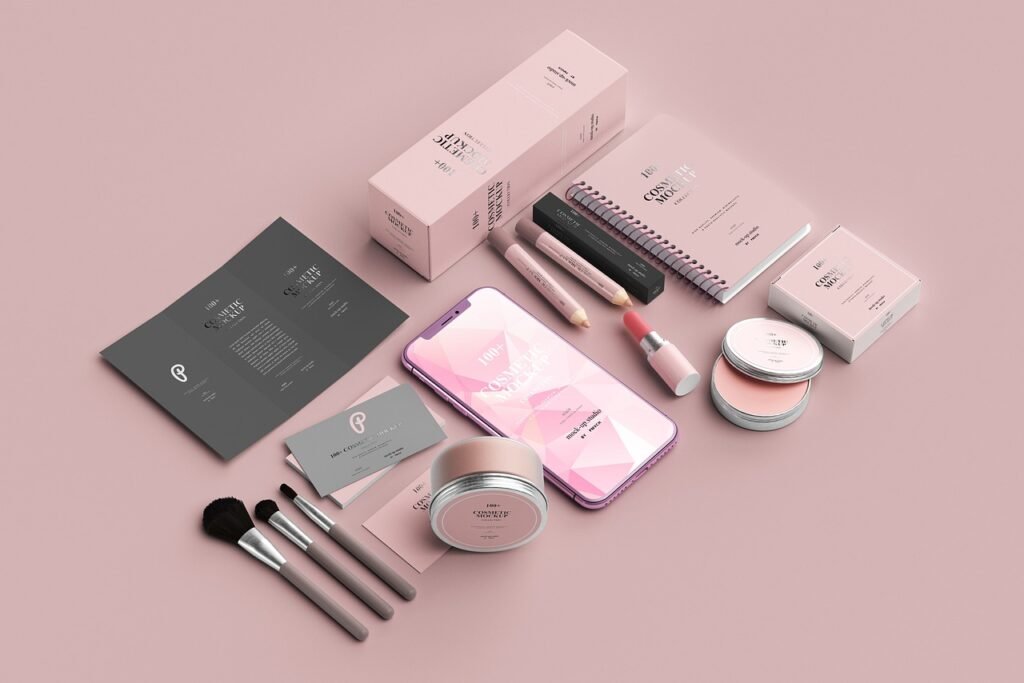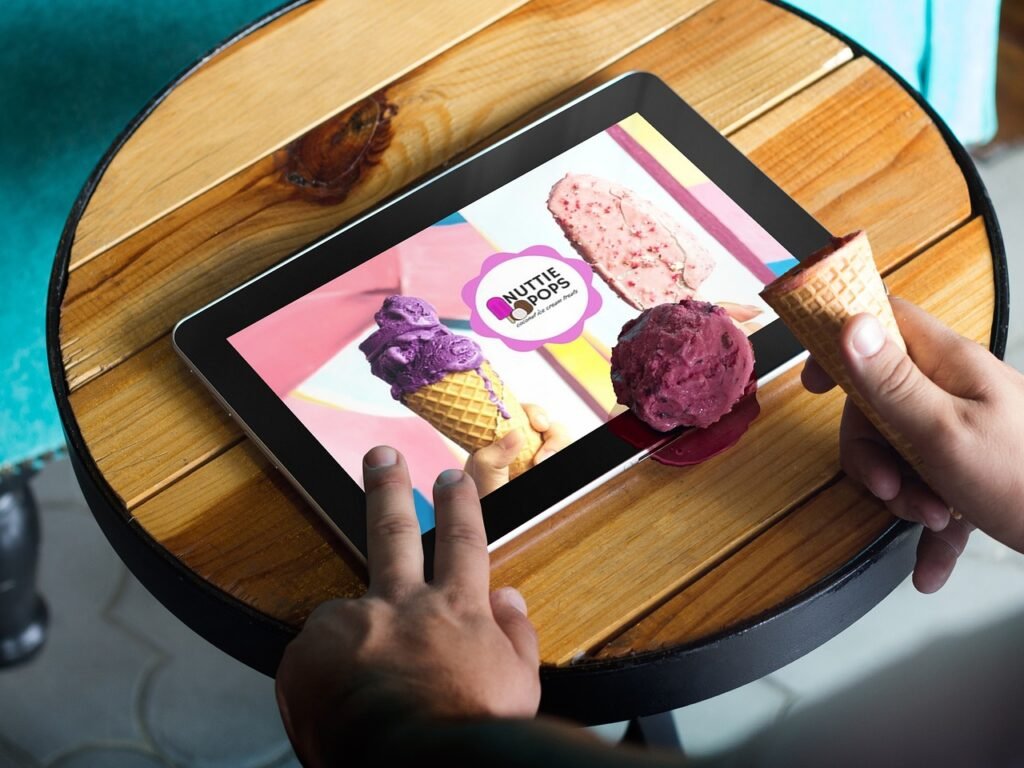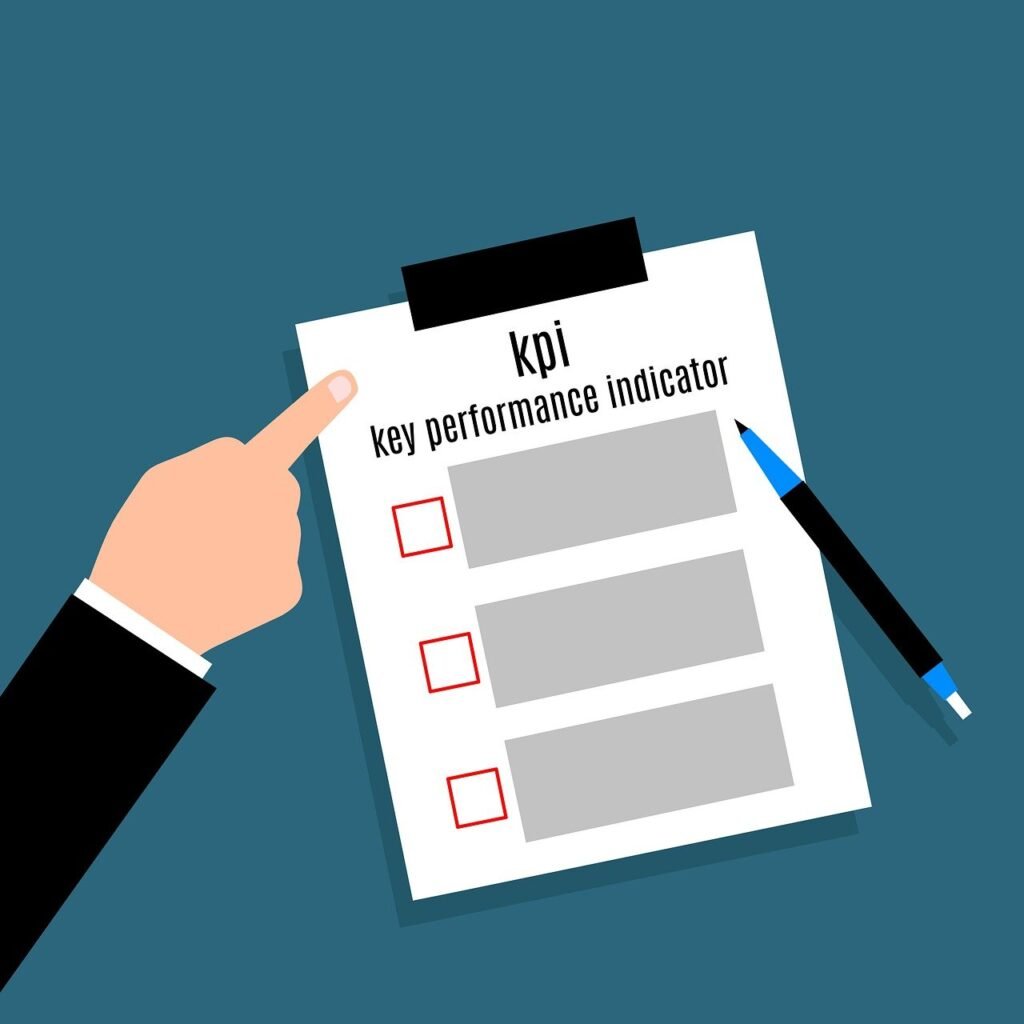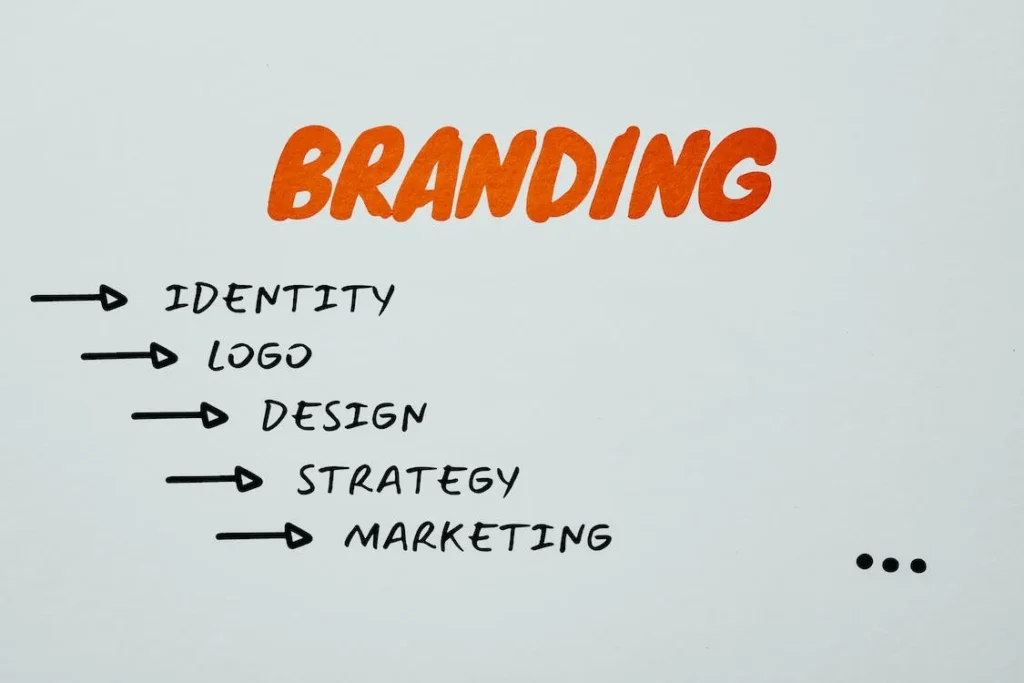This Article has been revised, edited and added to, by Poulomi Chakraborty.
- The Power of Visual Aesthetics in Branding
- Visual Identity vs. Brand Identity: Understanding the Difference
- Crafting a Cohesive Brand Experience
- Implementing Brand Personality Through Design
- Harnessing Color Psychology
- Typography and Brand Personality
- Imagery as a Storytelling Tool
- Creating a Visual Hierarchy
- Consistent Visual Identity Across Platforms
- Strategic Implementation of Design Branding
- Conducting In-depth Brand Analysis
- Developing a Unique Style Guide
- Leveraging Emotional Connect Through Design
- Consistent Reinforcement Across All Touchpoints
- Adapting to New Trends While Maintaining Core Identity
- Aligning Design with Business Objectives
- Leveraging Minimalism for Clarity
- Integrating Interactive Design Elements
- Developing a Feedback-Informed Design Strategy
- Building a Narrative Through Design
- Planning for Scalability
- Integrating Technology in Design Branding
- Utilizing Digital Tools for Enhanced Creativity
- Dynamic Branding: Adapting to User Context
- Personalization Through AI and Data Analytics
- Embracing Augmented Reality for Enhanced Interactions
- Utilizing AI for Customized Design Solutions
- Investing in Web and Mobile Optimization
- Implementing Virtual Reality for Brand Storytelling
- Leveraging Data Visualization for Clear Communication
- Enhancing User Experience with Machine Learning
- Measuring the Effectiveness of Design Branding
- Exploring Additional Elements of Design Branding
- Storytelling Through Design
- Sensory Branding
- Cultural Relevance
- Digital-First Design
- Sustainability in Design
- Measuring Visual Impact
- Integrating Localized Design Elements
- Fostering Co-Creation with Your Audience
- Prioritizing Accessibility in Design
- Emphasizing Sustainable Design Practices
- Harnessing the Power of Micro-Moments
- Building a Narrative with Data Integration
- Conclusion
In the dynamic world of marketing, design branding stands as a crucial bridge between a product and its audience. It’s not just about looking good; it’s about creating a visual identity that resonates deeply with consumers, marrying aesthetics with the essence of the brand to forge a connection that goes beyond the superficial. This article will guide you through the strategic integration of design and brand identity to amplify your brand’s impact in the market.
The Power of Visual Aesthetics in Branding

Think of your favorite brand for a moment. What comes to mind isn’t just a product or a service, but a whole tapestry of colors, shapes, and styles that represent what the brand stands for. This isn’t a coincidence. It’s the result of meticulous design branding—a process that aligns a brand’s aesthetic elements with its core values and identity to communicate more effectively with its target audience.
Visual Identity vs. Brand Identity: Understanding the Difference
To understand the synergy between aesthetics and brand identity, we first need to delineate the two concepts. Visual identity refers to the tangible elements of a brand, like logos, color schemes, and typography.
These are the features you can see. Brand identity, on the other hand, is broader. It encompasses the values, personality, and essence of a brand—qualities that inform and shape the visual identity.
For instance, a luxury car brand like Mercedes-Benz uses sleek lines, a restrained color palette, and an elegant typeface to suggest sophistication and high quality, aligning perfectly with its brand identity, which emphasizes luxury, performance, and engineering excellence.
This strategic alignment helps the brand communicate its values at a glance, building a quick and emotional connection with its audience.
Crafting a Cohesive Brand Experience
Aesthetic choices in design branding are not just about beauty; they’re about creating a cohesive brand experience that aligns with what the brand promises. Every color, shape, and line has psychological implications that can profoundly influence consumer perceptions.
Consider the use of color: Blue often represents calmness and reliability, which is why it’s a favorite among financial institutions like banks. Red, full of energy and urgency, is frequently seen in brands that want to evoke excitement and passion, such as Coca-Cola or Red Bull.
This alignment of aesthetics and brand values isn’t just superficial; it’s a powerful way to enhance brand recognition and loyalty. A study found that a signature color can increase brand recognition by up to 80%.
When Target uses its bright red logo, it’s not just a design choice—it’s a strategic branding decision that taps into the consumer’s subconscious, making the brand instantly recognizable and enhancing the feeling of familiarity and trustworthiness.
Implementing Brand Personality Through Design
Every brand has a personality—whether it’s friendly, authoritative, adventurous, or something else entirely. Design branding translates this intangible personality into a visual format that people can understand and relate to.
Let’s take the brand personality of “adventurous.” A brand that identifies with this trait might use images of exotic locations, bold color schemes, and dynamic typography to convey a sense of adventure and daring. This not only attracts like-minded consumers but also sets the brand apart from competitors in a meaningful way.
The challenge here is ensuring that every visual element reflects the brand personality consistently across all platforms. Consistency helps reinforce the brand identity, making it more memorable and recognizable to the audience. This is crucial in a digital age where a consumer might see the brand in various formats and on different platforms within a single day.
Harnessing Color Psychology
Color is one of the first elements that catch a consumer’s eye. It can evoke emotions and drive behavior, making it crucial for startups to choose their color palette wisely. Beyond just aesthetics, the colors of your brand should reflect the emotional undertone you want to associate with your business.
For instance, if your startup is in the health and wellness sector, opting for blues and greens can evoke feelings of calm and renewal, aligning your visual identity with the feelings of tranquility that customers seek from your products.
Typography and Brand Personality
The choice of typography influences how your message is perceived. Each typeface carries its own personality — be it strong and bold, or friendly and approachable — and selecting the right one can enhance the overall impression of your brand.
A tech startup might choose a sleek, modern sans-serif font to convey efficiency and forward-thinking, whereas a boutique café might opt for a handwritten typeface to express warmth and charm. Remember, consistency in typography reinforces brand recognition, so once you choose a typeface, stick with it across all your branding materials.
Imagery as a Storytelling Tool
Imagery, when used effectively, can tell your brand’s story without words. For startups, using authentic, high-quality images that align with your brand values can set you apart from competitors using stock photos.
Investing in custom photography might seem like a stretch on a limited budget, but the unique visual content it provides can significantly enhance the perceived value of your brand. Imagery that reflects real-life scenarios involving your products or services can also help establish a deeper emotional connection with your audience.
Creating a Visual Hierarchy
Startups must communicate their message clearly and quickly. A well-designed visual hierarchy helps guide the viewer’s eye to the most important information first. This involves organizing graphic elements in a way that reflects their order of importance.
For example, in a promotional poster, your brand’s tagline might be the most prominent feature, followed by a call-to-action, and then secondary information in smaller text. Effective use of scale, color, and composition can draw attention to what matters most, ensuring your key messages are never missed.
Consistent Visual Identity Across Platforms
In today’s digital age, your brand will be seen across multiple platforms, from your website to social media to mobile apps. It is vital that your visual identity remains consistent across all these platforms.
This consistency helps build familiarity and trust with your audience. Ensure that elements like your logo, color scheme, typography, and overall style are harmoniously integrated wherever your brand appears. For startups, where resources are often limited, focusing on a seamless digital presence can provide a competitive edge.
Incorporating these strategic elements into your visual branding approach not only enhances the aesthetic appeal of your brand but also strengthens its market position and appeal to potential customers. As a startup founder, investing thought and effort into a cohesive and appealing visual strategy can yield substantial dividends as your business grows.
Strategic Implementation of Design Branding

To effectively merge aesthetics with brand identity, it’s crucial to implement a series of deliberate and strategic actions. Here, we’ll dive into the specifics of creating a visually appealing and brand-coherent identity that captures and retains consumer attention.
Conducting In-depth Brand Analysis
Before any actual design work begins, a deep dive into the brand’s core is essential. This analysis involves understanding the brand’s mission, vision, values, and the demographics of the target audience. Such a comprehensive understanding ensures that the visual elements you choose resonate perfectly with both the brand’s essence and its consumers.
For example, if a brand’s core value is sustainability, the design branding should emphasize this through the use of natural motifs, green colors, and perhaps even materials in the physical packaging that reflect eco-friendliness. This not only appeals to environmentally conscious consumers but also strengthens the brand’s claim of being sustainable.
Developing a Unique Style Guide
A style guide is crucial in maintaining consistency in branding across various platforms and mediums. This guide should cover everything from logo placement and use, color palette, typography, and imagery styles to the tone of voice for written content.
The guide ensures that anyone working on the brand—from designers and marketers to external agencies—has a clear blueprint to follow, which helps in maintaining a coherent identity that the audience will recognize and trust.
Leveraging Emotional Connect Through Design
Emotions play a pivotal role in consumer decisions. Design branding that taps into these emotions can create a stronger allegiance to the brand. Consider Apple’s minimalist design approach, which isn’t just about aesthetics but also about evoking feelings of sophistication, innovation, and ease of use.
To implement this, think about the emotions you want your brand to evoke. Is it safety, happiness, excitement, or trust? Use colors, shapes, and imagery that historically and psychologically align with these emotions. For instance, curves are often seen as comforting and welcoming, which is why brands that want to appear friendly and approachable use rounded designs.
Consistent Reinforcement Across All Touchpoints
The consistency of visual and verbal branding across all touchpoints—website, social media, physical stores, packaging, and advertising—is vital. This repetition reinforces brand identity, helping to build familiarity and trust over time.
A brand like Nike uses the same distinctive swoosh logo, bold typeface, and inspirational messaging across all platforms, reinforcing its identity as a motivational and high-energy brand. This consistency ensures that no matter where you encounter the brand, the core message and aesthetic feel familiar.
Adapting to New Trends While Maintaining Core Identity
While consistency is key, so is adaptability. Brands must evolve visually to stay relevant. However, any adaptation or trend adoption should not come at the cost of losing the core brand identity. It’s about finding a balance between staying current and maintaining the essence of the brand.
For example, when rebranding or updating designs to be more modern, incorporate new trends subtly into the existing framework. If minimalism is a trend, a brand can simplify its designs without altering the fundamental colors or symbols associated with its identity.
Aligning Design with Business Objectives
Every design element should serve a specific business objective, whether it’s to increase brand awareness, drive sales, or build customer loyalty. As a startup founder, you should start by defining clear business goals and then strategically use design to support these goals.
For example, if the objective is to drive online sales, the design of your website and online ads should prioritize clear, compelling calls-to-action and an intuitive user interface that simplifies the purchasing process.
Leveraging Minimalism for Clarity
In a world bombarded with information, simplicity in design can help your brand stand out. Minimalistic design can aid startups in communicating their message more clearly and making their branding appear more professional and trustworthy.
This doesn’t mean your design should lack personality or creativity; rather, it should be focused and free of unnecessary elements that could distract from the core message. Use space effectively to highlight important aspects of your brand and create a clean, inviting layout that encourages engagement.
Integrating Interactive Design Elements
Interactive design can significantly enhance user engagement. For digital platforms, incorporating elements such as interactive infographics, clickable videos, or simple animation can make your brand more memorable and increase the time consumers spend with your brand. A
s a startup, this engagement is vital as it can lead to higher conversion rates. Ensure that these interactive elements are mobile-friendly and do not slow down your website to maintain a positive user experience.
Developing a Feedback-Informed Design Strategy
In the early stages of a startup, feedback is a valuable tool for refining your brand’s design. Regularly collect and analyze feedback from your target audience regarding your brand’s visual elements and overall design approach.
Use this data to make informed decisions about future design modifications, ensuring that your branding evolves in line with customer preferences and market trends. Implementing tools like A/B testing on different design elements can also provide concrete data on what works best for engaging your audience.
Building a Narrative Through Design
Your brand’s narrative should be woven into every aspect of your design branding. This narrative should tell the story of who you are, what you stand for, and why your product or service is unique. Use consistent themes and motifs across all branding materials to reinforce this narrative visually.
For instance, if your startup is built around sustainability, use earth tones and natural imagery to visually communicate your commitment to the environment. This consistency helps to build a strong, coherent brand identity that resonates with consumers.
Planning for Scalability
As your startup grows, your design branding should be able to scale with it. This includes designing a logo and visual elements that are versatile and can be easily adapted across various mediums and sizes.
Also, consider how your design strategy will expand as you enter new markets or segments. Having a scalable design system in place can save time and resources in the long run, allowing for consistent branding as your company evolves.
Implementing these strategic design principles can help startups not only in creating an appealing visual identity but also in aligning their branding efforts with larger business goals. This strategic alignment is essential for building a strong, sustainable brand that can adapt and thrive in dynamic market conditions.
Integrating Technology in Design Branding

In today’s digital-first world, leveraging technology is a game-changer in design branding. Technology not only enhances the capability to design more dynamically but also allows brands to engage with consumers in innovative ways.
Utilizing Digital Tools for Enhanced Creativity
Modern design software and tools offer capabilities far beyond traditional methods, enabling designers to experiment with complex graphics, virtual reality (VR), and augmented reality (AR) to create more immersive brand experiences. For instance, AR can bring a brand’s catalog to life, allowing consumers to visualize products in their own space before making a purchase decision.
Dynamic Branding: Adapting to User Context
Dynamic branding refers to the ability of a brand’s visual identity to change based on context without losing its core identity. Google’s logo transformations on its homepage, which change daily but maintain the brand’s fundamental elements, exemplify this strategy.
Technology allows for such flexibility; brands can adapt their logos and design elements to different cultures, holidays, or even consumer behaviors, making the brand relevant and engaging across different contexts.
Personalization Through AI and Data Analytics
Artificial intelligence (AI) and data analytics allow brands to deliver highly personalized experiences. By analyzing consumer data, brands can tailor their aesthetic and messaging to better align with individual preferences and behaviors, increasing engagement and loyalty.
For example, Netflix uses data to not only recommend movies but also to customize thumbnails based on the user’s previous viewing behavior, enhancing the visual appeal and personal relevance of its offerings.
Embracing Augmented Reality for Enhanced Interactions
Augmented Reality (AR) offers a dynamic way to bring your products and services to life, providing potential customers with an interactive and immersive experience. For startups, this means you can showcase your products in a user’s environment before they make a purchase, or bring static elements like business cards or print ads to life with interactive digital content.
Implementing AR can be as simple as creating AR filters for social media platforms, which can significantly boost user engagement and brand visibility.
Utilizing AI for Customized Design Solutions
Artificial Intelligence (AI) can automate and optimize many aspects of design branding, from logo creation to personalized marketing materials. AI tools can analyze user data to create designs that cater to individual preferences, enhancing the user experience and increasing brand loyalty.
For instance, using AI-driven analytics to understand which color schemes or layouts resonate most with your audience can help tailor your branding efforts to be more effective.
Investing in Web and Mobile Optimization
In today’s digital-first world, your startup’s online presence must be optimized for both web and mobile platforms. Responsive design ensures that your website adjusts seamlessly to any screen size, providing an optimal viewing experience for all users.
This is critical as more consumers use mobile devices for browsing and shopping. Ensure your website’s design is not only visually appealing but also functional on mobile devices, with fast load times and easy navigation.
Implementing Virtual Reality for Brand Storytelling
Virtual Reality (VR) provides an even deeper level of immersion than AR and can be a powerful tool for storytelling. By creating virtual experiences, startups can transport users to different places, showcase product capabilities in detailed virtual environments, or even create memorable interactive brand experiences.
While more resource-intensive, VR campaigns can generate significant buzz and position your brand as a forward-thinking innovator.
Leveraging Data Visualization for Clear Communication
Data visualization is an essential tool for startups that need to communicate complex information simply and compellingly. Using graphical representations of data not only makes the information more digestible but can also help highlight trends, patterns, and insights that support your brand’s message.
Whether it’s through interactive graphs on your website or infographics on social media, effective data visualization can strengthen your brand’s authority and educational value.
Enhancing User Experience with Machine Learning
Machine learning can dramatically improve the user experience by predicting user preferences and behavior patterns. By integrating machine learning algorithms into your website or app, you can provide personalized experiences, recommend products, and dynamically adjust content to meet user needs. This not only enhances customer satisfaction but also increases the likelihood of conversions.
By strategically integrating these technological advancements into your design branding, your startup can not only enhance its aesthetic appeal but also offer richer, more engaging user experiences. These technologies allow you to differentiate your brand, cater to individual customer needs, and position your startup as a leader in innovation and customer engagement.

Related: Check out our free SEO suite

Measuring the Effectiveness of Design Branding
To ensure that design branding efforts are successful, brands need to measure their impact. This involves looking beyond aesthetic appeal and assessing how design influences brand perception, engagement, and ultimately, business outcomes.
Setting Clear Metrics for Branding Success
Key performance indicators (KPIs) for design branding might include brand recognition, consumer engagement rates, social media sentiment analysis, and conversion rates. Tools like brand tracking surveys and A/B testing can also provide insights into how effectively design changes are impacting brand perception.
Gathering Consumer Feedback
Regular feedback from consumers can provide invaluable insights into how they perceive the brand’s visual identity. This can be achieved through social media interactions, customer reviews, and direct surveys. Feedback not only helps in understanding consumer preferences but also in identifying areas for improvement.
Continuous Improvement and Adaptation
The ultimate goal of measuring these efforts is to refine and optimize the brand’s visual strategy continually. Markets evolve, consumer preferences change, and new design trends emerge. Brands that consistently review and adapt their design branding in response to these changes are more likely to remain relevant and preferred by consumers.
Design branding is not a static process; it’s a dynamic interaction between brand and consumer, aesthetics and identity, creativity and technology. By understanding and implementing these strategies, brands can create impactful visual identities that resonate deeply with their audience, driving engagement and loyalty.
Establishing Key Performance Indicators (KPIs)

Start by defining specific, measurable KPIs that align with your business objectives. These might include metrics such as brand awareness, measured by social media mentions and website traffic; customer engagement, tracked through click-through rates and time spent on your website; and ultimately, conversion rates. Each of these metrics can offer insights into how effectively your design branding influences customer behavior and business outcomes.
Utilizing Analytics Tools
Leverage analytics tools to gather data on how users interact with your brand across various platforms. Google Analytics, for example, can provide detailed insights into how visitors find your website, which pages they spend the most time on, and the path they take before completing a purchase or leaving.
Social media platforms also offer analytics that can help you understand how your content performs in terms of engagement, reach, and the demographic details of your audience.
Conducting Brand Audits
Regular brand audits are essential to assess the overall strength of your brand in the market. This involves reviewing all your branding materials and touchpoints to ensure consistency and alignment with your brand strategy.
It also means checking how your brand is perceived externally through customer feedback, reviews, and market research. These audits help identify areas of strength and weakness, allowing you to make informed decisions about where to make adjustments.
Implementing A/B Testing
A/B testing is an effective method for comparing two versions of a web page, email, or other marketing material to see which one performs better on a specific conversion goal.
This can be particularly useful for testing different design elements such as color schemes, layouts, and call-to-action buttons to determine what resonates best with your audience. By systematically testing and optimizing your design elements, you can incrementally improve the effectiveness of your branding.
Engaging in Customer Feedback Loops
Feedback from your target audience is invaluable. Regularly engage with your customers through surveys, focus groups, and feedback forms to gather their opinions on your branding.
Understanding how your design is perceived from the customer’s point of view can provide critical insights that no amount of quantitative data can. Moreover, showing that you value and act on customer feedback can strengthen brand loyalty and trust.
Tracking Brand Equity
Brand equity is the value that your brand adds to your product or service. Measuring brand equity involves assessing recognition, customer loyalty, perceived quality, and association strength.
Tools like brand equity models and brand valuation metrics can help quantify this aspect of your branding, giving you a clearer picture of your brand’s position in the consumer’s mind relative to competitors.
By effectively measuring these aspects of your design branding, you can not only see what is working and what isn’t but also demonstrate the ROI of your branding efforts. This strategic approach allows you to continuously refine and optimize your branding strategies, ensuring they align with business goals and resonate with your target audience, ultimately leading to sustainable business growth.
Exploring Additional Elements of Design Branding

Beyond the visual aesthetics and identity alignment, several other crucial elements contribute to the success of design branding. Let’s explore these aspects to understand how they can be optimized to enhance a brand’s presence and impact.
Storytelling Through Design
Storytelling is a powerful tool in branding. It allows brands to communicate their history, values, and visions in a way that resonates emotionally with consumers. Effective design branding uses visual elements to tell these stories, creating a narrative that consumers can connect with beyond a purely commercial relationship.
Implementation: Use imagery, color, and design motifs that reflect the brand’s story. For example, a brand with a heritage in craftsmanship might use intricate designs or heritage colors in its logo and product designs to convey its long history of expertise.
Sensory Branding
Engaging multiple senses can enhance the consumer’s connection to the brand. While visual elements are key, incorporating touch, sound, and even smell into branding efforts can provide a more immersive experience.
Implementation: Consider the tactile feel of your product packaging or the ambient music in your stores. Brands like Yankee Candle use scent as a core element of their branding, making their stores instantly recognizable by smell alone.
Cultural Relevance
In our globalized world, being culturally relevant and sensitive is crucial. Design branding that respects and reflects cultural nuances can greatly enhance brand acceptance and loyalty in different markets.
Implementation: Adapt colors, symbols, and marketing materials to align with local cultures without losing the global brand identity. McDonald’s, for example, varies its menu and sometimes its color scheme in different countries to align with local tastes and cultural preferences.
Digital-First Design
With the increasing dominance of digital media, brands must ensure that their design branding translates well across various digital platforms. This includes being responsive on different devices and being effective in both large and small formats.
Implementation: Create adaptable logo designs and visual elements that are scalable for different screen sizes and resolutions. Ensure that the visual identity is cohesive across traditional and digital mediums.
Sustainability in Design
As consumers become more environmentally conscious, incorporating sustainability into design branding can not only appeal to this demographic but also contribute positively to the brand’s public image.
Implementation: Use eco-friendly materials and sustainable practices in product packaging and marketing materials. Brands like Patagonia not only use sustainable materials but also use their branding to advocate for environmental issues, reinforcing their brand identity as eco-conscious.
Measuring Visual Impact
To ensure that your design branding efforts are effective, it’s important to measure their impact regularly. This involves analyzing consumer response, engagement levels, and brand perception changes.
Implementation: Utilize tools like eye-tracking software to see how consumers interact with your designs or conduct regular market research to gauge consumer reactions to visual branding elements.
Integrating Localized Design Elements
In an increasingly globalized market, localizing your design branding can make your startup stand out and resonate more strongly with local audiences. This goes beyond language translation; it involves incorporating local colors, motifs, and cultural symbols into your design to reflect local tastes and traditions.
This strategy can dramatically increase your brand’s relevance and appeal in specific markets, fostering a deeper connection with the audience.
Fostering Co-Creation with Your Audience
Engaging your customers in the design process can transform them from passive consumers to active participants in your brand story. This might involve crowdsourcing ideas for a new logo or involving them in choosing your next product design through social media polls.
Such participatory design processes can boost engagement and loyalty, as customers feel a personal investment in the success of the brand they helped shape.
Prioritizing Accessibility in Design
Accessibility should be a key consideration in your design branding, ensuring that all potential customers, including those with disabilities, can experience your brand fully. This includes designing for visual impairments, hearing disabilities, and other considerations, such as using color schemes that are friendly for colorblind individuals and incorporating voice navigation for those who cannot use traditional navigation methods.
Making your brand accessible to a wider audience not only broadens your market but also enhances your brand’s reputation as inclusive and socially responsible.
Emphasizing Sustainable Design Practices
Sustainability is becoming increasingly important to consumers. Integrating sustainable practices into your design branding, such as using recycled materials for packaging or digital-only marketing materials, can attract a more environmentally conscious consumer base. Moreover, highlighting these sustainable practices in your branding can strengthen your brand’s image as a responsible and ethical choice in the eyes of your consumers.
Harnessing the Power of Micro-Moments
Micro-moments refer to instances when consumers turn to a device to act on a need to learn, do, discover, watch, or buy something. By optimizing your visual branding to capture these moments—through quick-loading images, easy-to-read fonts on mobile devices, and instant-access content—you can effectively catch the consumer’s attention at critical decision-making times. Ensuring your brand is present and optimally displayed during these moments can lead to higher engagement and conversion rates.
Building a Narrative with Data Integration
Utilizing data in your design branding not only personalizes the consumer experience but can also tell a compelling story about your brand. For instance, incorporating real-time data into your designs, such as customer testimonials or live stats showing the popularity of a product, can provide social proof and enhance credibility.
Data-driven design decisions based on consumer behavior analytics can also ensure that your branding remains dynamic and responsive to changing consumer trends.
By exploring these additional elements, startups can create a design branding strategy that not only stands out visually but also resonates on a deeper level with their target market. Each of these strategies offers a unique avenue to build a strong, memorable brand that effectively communicates its values and engages its audience in meaningful ways.
Conclusion
In the vast realm of marketing, design branding stands as a pivotal strategy that not only shapes consumer perception but also fortifies brand loyalty and recognition. It transcends mere aesthetics, weaving together a brand’s core values, cultural nuances, and innovative storytelling into a cohesive visual identity that resonates on multiple sensory levels. Brands like Apple, Coca-Cola, and Nike exemplify this mastery, where their visual communication not only reflects their identity but also actively engages and inspires their audience.
To truly succeed, a brand must consistently evaluate and adapt its design strategy, ensuring it remains relevant and responsive to emerging trends and consumer expectations. Ultimately, effective design branding isn’t just about being seen—it’s about being remembered, making an emotional connection, and building a relationship that endures. Through thoughtful design and strategic implementation, brands can create powerful visual narratives that captivate and connect with audiences worldwide, driving both immediate impact and long-term loyalty.
Read Next
- Predictive Analytics and SEO Trends in Lifesciences Businesses
- How AI is Revolutionizing Biotech SEO
- Chatbots and SEO in the Biotech Industry
- The Future of Voice Search for Biotech Startups’ SEO Campaigns
- Using Social Platforms to Amplify Biotech Research





















Comments are closed.